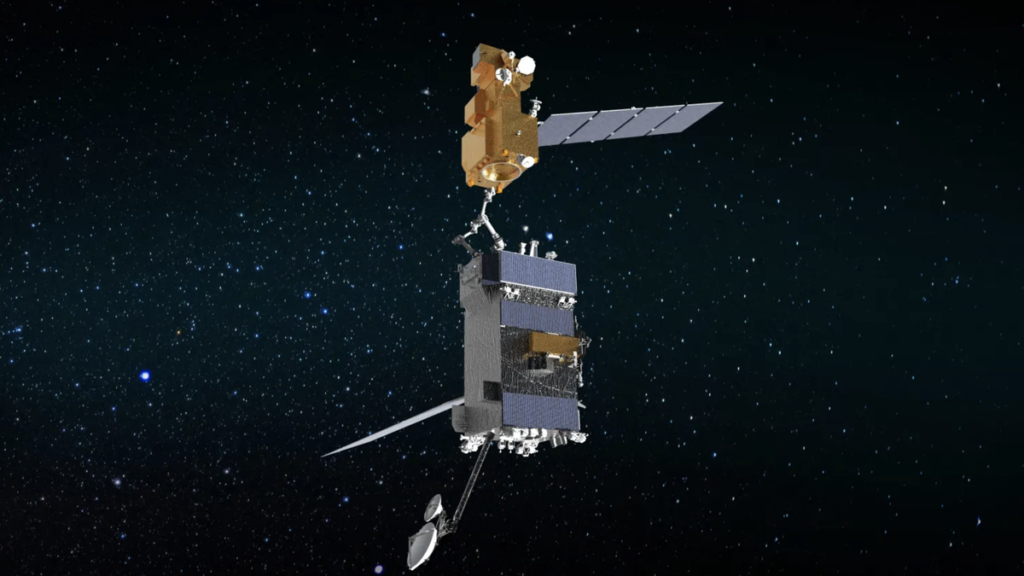An ambitious NASA project designed to test satellite refueling in space, known as OSAM-1, has been discontinued after significant technical, cost, and scheduling difficulties. The cancellation comes in the wake of an October 2023 report from NASA’s Office of Inspector General that cited “poor performance” by Maxar, the primary contractor for the project.
First Full-Color Images From Webb Space Telescope
NASA announced the cancellation of the On-orbit Servicing, Assembly, and Manufacturing 1 (OSAM-1) project on Friday March 1. The project aimed to refuel the aging Landsat-7 Earth observation satellite and demonstrate in-space manufacturing technology. It faced “continued technical, cost, and schedule challenges,” leading to its discontinuation. NASA’s decision, revealed in a news release, followed an “in-depth, independent project review.”
A key reason for the cancellation, NASA explained, is the emerging industry trend of designing satellites with built-in capabilities for refueling. OSAM-1 planned to use an orbiting spacecraft with robotic arms to forcibly access the fuel tanks of satellites not originally designed for refueling (this animated video of the concept will give you a good idea of the complexities involved). Such an approach is becoming less relevant as the industry shifts to building satellites with refueling capabilities in mind.
The project’s termination also stems from the “lack of a committed partner,” as NASA put it, presumably referring to Maxar, a key contractor for OSAM-1. A report from NASA’s inspector general in October highlighted Maxar’s “poor performance,” citing the company’s underestimation of the project’s scope and complexity, a lack of full understanding of NASA’s technical requirements, and deficiencies in necessary expertise. The company was already taking a financial loss on its OSAM-1 involvement. The nature of Maxar’s fixed-price contract with NASA, which didn’t “provide NASA adequate flexibility to incentivize Maxar to improve its performance,” contributed to staffing challenges and project delays, according to the OIG.
Maxar Intelligence and Maxar Space Systems are two separate divisions of Maxar Technologies. Maxar Intelligence, through its satellite fleet, focuses on Earth intelligence and geospatial analytics, while Maxar Space Systems designs and manufactures spacecraft and space hardware.
To support OSAM-1, NASA contributed an additional $2 million in labor resources. Despite these efforts, the project experienced significant cost overruns and delays. According to NASA, much of the project’s cost growth and schedule setbacks were due to Maxar’s poor performance, particularly on the spacecraft bus and the Space Infrastructure Dexterous Robot (SPIDER) contracts, with each deliverable approximately two years behind schedule.
The SPIDER system was to include a lightweight 16-foot-long (4.9-meter) robotic arm, adding to the total of three robotic arms on the mission. The rationale behind OSAM-1 was to develop technologies for the improved managing of satellite fleets, getting more bang for the buck on initial investments and to address the mounting problem of orbital debris.
NASA will now commence an orderly shutdown of OSAM-1, which involves deciding the fate of the project’s sensitive hardware, exploring potential partnerships or alternative uses for the hardware, and licensing the project’s technological developments. As MSNBC reports, the agency said it plans to support the approximately 450 personnel involved in OSAM-1 through the fiscal year 2024. It will also find ways to minimize the impact of the cancellation on the workforce at NASA’s Goddard Space Flight Center in Greenbelt, Maryland.
Related article: Boeing’s Starliner Program Reaches Staggering $1.1 Billion in Losses
While it’s always unfortunate to see large-scale projects like this come to an end, NASA did what it had to do, pulling the plug after identifying intractable—and costly—challenges. Another NASA partner, Boeing, is currently struggling to develop the CST-100 Starliner spacecraft for crewed trips to space. Despite these struggles, NASA remains committed to the program, trusting Boeing to succeed and needing Starliner as an alternative to SpaceX’s Crew Dragon.
For more spaceflight in your life, follow us on X and bookmark Gizmodo’s dedicated Spaceflight page.






